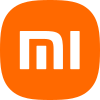Surface Duo
| Brand | Microsoft Surface |
|---|---|
| First released | September 10, 2020 |
| Successor | Surface Duo 2 |
| Related | Surface Neo |
| Type | Smartphone |
| Form factor | Folio, phablet |
| Dimensions | 145.2 mm (5.72 in) H 93.3 mm (3.67 in) W 9.9 mm (0.39 in) D (folded) |
| Operating system | Original: Android 10 |
| System on chip | Qualcomm Snapdragon 855 |
| Memory | 6 GB LPDDR4X |
| Storage | 128 or 256 GB |
| Battery | 3577 mAh |
| Display | Dual 5.6 inches (140 mm) 1800×1350 AMOLED, 401 PPI |
| Rear camera | 11 MP f/2.0, 1.0 µm, PDAF and 84.0° diagonal FOV |
| Connectivity | 802.11ac (2.4/5GHz), Bluetooth 5.0, LTE: 4x4 MIMO, Cat.18 DL / Cat 5 UL, 5CA, LAA |
| Website | www.surface.com www.surface.com/business |
| Microsoft Surface models |
|---|
Accessories
|
The Microsoft Surface Duo is a dual-touchscreen Android smartphone manufactured by Microsoft. Announced during a hardware-oriented event on October 2, 2019 and officially released on September 10, 2020,[1] it is part of the Microsoft Surface series of touchscreen hardware devices, and the first device in the line that does not run Windows. It also marks Microsoft's first smartphone since the dissolution of Microsoft Mobile and the Windows Phone platform.
A successor, the Surface Duo 2, was unveiled in September 2021.
Specifications[]
Hardware[]
The Surface Duo is a folio-styled device, with two 5.6-inch OLED displays with a 4:3 aspect ratio. When unfolded, they form an 8.1-inch surface with a 3:2 aspect ratio and total resolution of 2700×1800.[2] The 360-degree hinge allows the device to be used in several "postures", including being fully unfolded as a flat surface, a landscape mode where the virtual keyboard occupies the entirety of the bottom screen, and the other screen folded backwards for single-screen use.[3] It is compatible with Surface Pen styluses.[4]
The Surface Duo uses a Qualcomm Snapdragon 855 system-on-chip with 6 GB of RAM. Microsoft stated that it worked with Qualcomm to optimize the device for multitasking.[3] The device contains two batteries with a total capacity of 3577 mAh, which are split between the two halves.[2] The Surface Duo is sold in models with 128 and 256 GB of non-expandable internal storage.[5][3]
When unveiling the Surface Duo, Microsoft avoided referring to the device as being a "phone", with chief product officer Panos Panay primarily referring to it as a Surface device.[6][7]
Software[]
The Surface Duo ships with Android 10 and Google mobile services, and is pre-loaded with both Google and Microsoft-developed apps. The two displays are designed to act like a multi-monitor configuration on a PC; individual apps can be displayed across the displays, an app on one display can open external links on the other, and supported apps can display different views on each display. Microsoft stated that it would contribute the associated APIs for these features to the upstream Android Open Source Project (AOSP), so that this functionality could be leveraged by other dual-screen and foldable smartphones.[2]
Microsoft has committed to upgrading the Surface Duo to Android 11 by the end of 2021.[8]
Reception[]
The Verge noted that the Surface Duo was thin and had a relatively light weight for its class, and observed that its design "encourages you to be intentional with your use of the device and to be intentional in not using it." It was felt that the dual-screen configuration of the Surface Duo made multitasking more natural and less "tacked on[to]" Android than other devices, and that apps such as Amazon Kindle and Microsoft Outlook were well-optimized to the dual-screen setup. The camera was criticized for its placement on the device and its low quality (being described as akin to a webcam and poor for a $300 phone, let alone one that cost $1,400), and the device was also panned for its low and outdated hardware specifications (including a lack of 5G support, and an insufficient amount of RAM for a multitasking-oriented device), although noting that Microsoft had likely used the time since the 2019 announcement to optimize its software to the Snapdragon 855. In conclusion, it was felt that "there are more than a few glimmers of vision and potential in the Surface Duo", but that "the execution is bad in places, and a lot of people aren’t going to get what Microsoft is going for."[3]
Mary Jo Foley of ZDNet described the Duo's hardware as "premium and drool-worthy", and found it to be the first Surface-branded device that was able to fulfill Microsoft's promise of "all-day" battery life, but felt that its multitasking systems were not intuitive (drawing comparisons to Windows 8, which "assume[d] users can easily figure out how to do basic things and errs on the side of providing too little information").[4]
Timeline[]

See also[]
- Microsoft Courier
- Nokia X family
- Microsoft Lumia 650
References[]
- ^ Warren, Tom (2020-08-12). "Microsoft's Surface Duo arrives on September 10th for $1,399". The Verge. Retrieved 2021-10-08.
- ^ a b c Gartenberg, Chaim (2019-10-02). "Microsoft surprises with new foldable Surface Duo phone running Android". The Verge. Retrieved 2021-10-08.
- ^ a b c d Bohn, Dieter (2020-09-10). "Microsoft Surface Duo review: double troubles". The Verge. Retrieved 2021-10-08.
- ^ a b Foley, Mary Jo. "Surface Duo review: Why I'm still confused about Microsoft's dual-screen device". ZDNet. Retrieved 2021-10-08.
- ^ Vasani, Sheena (2021-09-22). "How to preorder the Surface Duo 2". The Verge. Retrieved 2021-10-08.
- ^ Tibken, Shara. "Yes, the Microsoft phone is really happening: Introducing the Surface Duo". CNET. Retrieved 2021-10-08.
- ^ Dolcourt, Jessica. "Why Microsoft doesn't want to call the Duo a phone". CNET. Retrieved 2021-10-08.
- ^ Warren, Tom (2021-09-23). "Microsoft says the original Surface Duo will get Android 11 before the end of the year". The Verge. Retrieved 2021-10-08.
- Microsoft Surface
- Foldable smartphones
- Android (operating system) devices
- Mobile phones introduced in 2020
- Dual screen phone




